
Blast Off
AV Editor, Andy Ciddor, shuttles out to the Kennedy Space Center and suits up for the new Exploration Space attraction.
Text:/ Andy Ciddor
Images:/ BRC Imagination Arts
I suppose I should be up front and disclose my personal bias: I’ve been obsessed with space science, interplanetary exploration and rocketry for as long as I can remember. I was in prep grade when the USSR launched earth’s first artificial satellite Sputnik 1, and enthralled when Dad took us outside to show us the new star moving across the night sky. Decades later, the primary reason for upgrading our household Internet connection from an ISDN splitter to ADSL was to get (almost) enough bandwidth to watch streaming NASA TV. I’ve closely followed the journeys of the two Mars rovers for the seven years since they landed, and last year, on the only recreational trip I’ve taken to the US, my equally space-obsessed adult stepson and I spent two very intense days at the Kennedy Space Center (KSC) in Florida, taking every available launch-pad tour and looking at the visitor centre exhibits.
So you can imagine how long it took me to respond to an offer to sneak off for an hour from the InfoComm show in Orlando for a technical tour of Exploration Space, the most recently opened attraction at KSC. Exploration Space is especially important to NASA as the July 8th launch of the shuttle Atlantis on mission STS-135 marked the end of NASA’s manned space program for the foreseeable future, and the transition of KSC from a working manned space-launch facility to what is essentially a museum and theme park.
Exploration Space represents an interesting change of direction for NASA; it looks to the glorious future of space exploration, rather than celebrating or reliving its past achievements. The message of the exhibit is that we’ve only taken the first faltering steps into the cosmos, and that the most interesting and challenging tasks are yet to come, so NASA is looking for its next generations of scientists and engineers.
TO INFINITY
While many of us, especially those with kids, are familiar with the educational and inspirational orientation of such places as Scitech, ScienceWorks, Questacon, etc, the existing exhibits scattered around the vast KSC site are more museum-like; celebrating NASA’s bold past and in particular their obsession with astronaut worship. During my previous visit to KSC I was quite surprised to find that many of the visitor centres and exhibits were tired and worn out through prolonged use, and what appeared to be inexpert maintenance. Many used very dated, low-resolution and often substantially-deteriorated replay and display systems. In one son et lumiere show the script was cringeworthy, the ‘special effects’ were neither special nor effective, and the lighting cues appeared out of synch with the sound track. Other exhibits demonstrated a lack of creative inspiration and more surprisingly, a disdain for authenticity and accurate technical detail.
Exploration Space is the complete opposite of these older exhibits. This project was conceived and produced by BRC Imagination Arts, one of the global heavyweight companies in exhibition design, in collaboration with KSC Visitor Complex and Delaware North Companies Parks & Resorts. It’s clearly focussed on catching and holding its audience’s attention while it tells its story and makes its sales pitch for their hearts and minds. The project was developed from initial vague briefing concept to running exhibit in just on 12 months; a process that included the US President cancelling the Constellation project (NASA’s post-shuttle manned space program) which was featured heavily in the exhibit, only weeks before the opening.
(image above) Live on Stage: Twice an hour the live presenter delivers a tightly-scripted six-screen show that’s programmed in Dataton Watchout to give the appearance of the central screen being a huge gesture-based touchscreen.
MORE INFORMATION
Kennedy Space Centre: www.kennedyspacecenter.com
Electrosonic: www.electrosonic.com
BRC: www.brcweb.com
Dataton: www.dataton.com
Christie: www.christiedigital.com

ROCKET SCIENCE
The exhibition presents space travel as a series of challenges that need to be overcome: spending long periods in a weightless environment while being bombarded by cosmic rays, landing safely on a new planet, getting enough equipment out of the earth’s gravitational field, moving around in an alien landscape, designing and building the equipment required, and planning a journey for the minimum travel time.
Some of these problems are presented primarily in a graphical format augmented by video presentation, others are essentially video presentations accompanied by some graphical guidance material, while the problems of such tasks as orbital docking and planetary landing are presented on interactive consoles running a 21st century descendent of the once-popular Apple ][+ Lunar Lander simulator. In addition to all of the flat screen and graphical material, two of the exhibits feature striking two and a half and three dimensional replicas of systems being developed for movement across alien terrain.
Throughout this exhibition, very large-scale, bold graphics are used to break out of the frame of the traditional museum display. Some of these wall-scale graphics feature life-size images of NASA scientists and engineers that are so startlingly realistic that the images have been ‘defaced’ by signage to emphasise the two-dimensional nature of the graphics, and prevent the images being mistaken for real people, which from my own experience is very easy to do (but then I mix with a lot of two-dimensional people anyway).
The Your Destination exhibit uses a picture frame portal to disguise the 45° inclination of the black rear projection screen behind it. The high-contrast full-frame images of spherical bodies such as the earth, our moon and Mars on the screen, give the overwhelmingly convincing illusion that you are looking at a three-dimensional spherical objects. A cheap trick but a good one.

“”
The project was developed in just on 12 months; a process that included the US President cancelling NASA’s post-shuttle manned space program, which was featured heavily in the exhibit, only weeks before the opening
SPACE TIME
The centrepiece of the exhibition space is an open-format 50-seat theatre with a lectern, a small stage, a six-screen Dataton Watchout projection system, a flexible lighting grid, a wireless mic and full cinematic surround sound. Twice each hour the theatre hosts a 12-minute multimedia show featuring a live presenter interacting with a six-screen canned show. In keeping with the experiences of its young personal electronics-habituated target audience, the show content is designed, programmed and choreographed to give the impression that the central screen is a giant iPad-style touchscreen that responds to the presenter’s iOS-style swiping gestures. During the show, five of the 4.5m screens on nearby exhibits switch over to Watchout-fed material that complements the stage presentation and thematically encloses the auditorium space.
The show combines an inspirational retelling of NASA’s glorious past and possible future with an eye to encouraging, and eventually recruiting, the next generation of interplanetary scientists, engineers and space explorers. This is all wrapped up in some politically-important double-think that tries to reconcile an exciting space future with a political and financial present that has decimated the US space program. At that point it begins to sound a little like any other government policy announcement or corporate presentation.
FLEXIBLE LAUNCHPAD
Most importantly though, the show consists entirely of a live presenter and recorded content replayed through a very flexible system. At the drop of a cosmonaut’s helmet the system can be used for a wide range of public or corporate presentations, hired out to clients, or new shows prepared to tell a range of different stories. The flexibility designed into the auditorium systems is typical of BRC’s approach to the entire exhibition space. Even the 12-minute Watchout show was structured so that individual segments can be updated or replaced as policies and technologies change or NASA revises its near-term goals.
Although the Exploration Space exhibition is located in a pretty ordinary commercial warehouse-style building that has housed exhibitions for many years, BRC was able to strip it back to bare walls and start again with what could have been a purpose-built setup for this exhibition. Instead, what BRC and its technology/integration supplier Electrosonic did was to refit the building into a much more flexible facility that’s capable of staging all sorts of events and exhibitions during its lifetime. No doubt some of that flexibility was built in to allow for the changes that would inevitably arise with such a fast-track project where the refit was happening simultaneously with the development of the exhibition content.
Something that was clearly custom-built for the current exhibition are the auxiliary air conditioning ducts that supply clean, cool air to the intakes on the Christie projectors. This is a simple but effective means of keeping the projectors in optimum operating condition in the hot and humid environment of the swampy Florida coast.
UNIVERSAL APPEAL
Created by the same BRC/Electrosonic design and integration team that has produced high quality exhibitions at major sites and around the world, Exploration Space is an outstanding example of the art, science and magic of AV, and particularly in view of its subject matter, was a great joy for me to behold. Without taking anything at all away from the excellence of this project, I was encouraged by the realisation that the best of Australian design and integration is also in this class.
YES, THAT ELECTROSONIC
Yes, this is the same Electrosonic that practically invented the technologies that made possible the ‘multimedia’ slide shows that were once what the AV event business was all about. However, just as Bell & Howell in Australia became the integrator B&H, the Electrosonic company with branches in many countries, has become an integrator on an international scale, and in March of 2010 sold its products division to Extron Electronics, so that it could focus on the integration business.

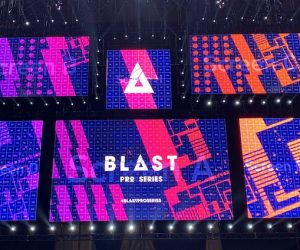
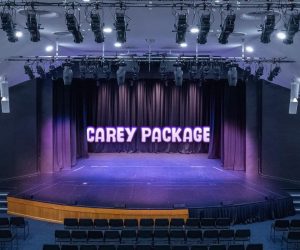
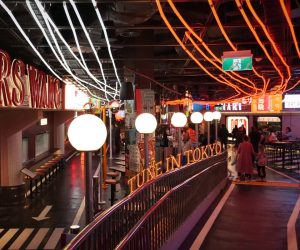
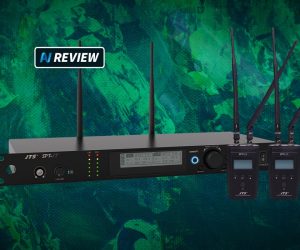


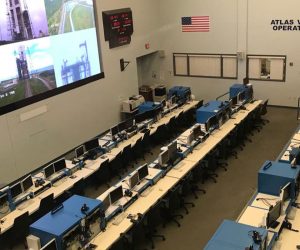


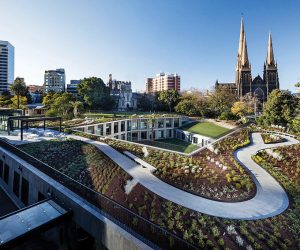
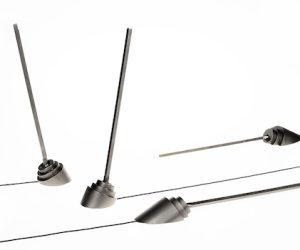
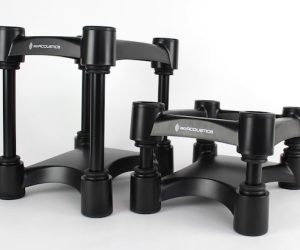


RESPONSES